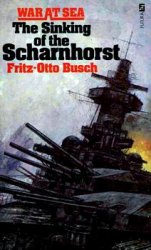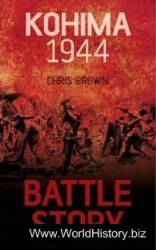In the 1950s and 1960s, popular culture—those trends in art and entertainment that society found most appeal-ing—reflected Americans’ desire to enjoy their newfound prosperity and national power.
The United States flourished after World War II. Spurred by a postwar economic boom, the gross national product jumped from over $200 billion in 1945 to over $500 billion in 1960. As Americans enjoyed the benefits of prosperity, they experienced substantial changes in cultural tastes. Free of wartime transportation and spending restrictions, the American people, eager to enjoy their leisure time, began to expand their cultural tastes and explore new options in the arts and entertainment.
In the postwar years, American theater featured a broader choice of styles that represented many different groups in society. During World War II, many American theaters featured plays that were little more than propaganda or escapist fare. In subsequent years, dramas such as Arthur Miller’s The Crucible (1953), about a 17th-century witch hunt that paralleled the communist witch hunts of the 1950s, and Tennessee Williams’s Cat on a Hot Tin Roof (1955), which focused on the destructiveness of pretense in an American family, drew large audiences to the theater. Lighthearted musicals such as Guys and Dolls (1950) and My Fair Lady (1956) coupled brilliant lyrics with sophisticated choreography to produce stories that left audiences with a positive feeling about American society. African-American plays earned new prominence in the 1950s with works such as Lorraine Hansberry’s A Raisin in the Sun (1959), the story of an African-American family coping with a financial windfall. Adrienne Kennedy’s autobiographical Funnyhouse of a Negro (1962) depicted her struggle as an American of mixed racial heritage. Americans increasingly enjoyed the complex storylines and superior performances that theater offered.
While theater offered a diversion from society’s larger problems, young writers explored the problems and confusion of American culture. Norman Mailer’s novel The Naked and the Dead (1948) countered cheery images of the war with a darker view of men engaged in combat. The play Death of a Salesman (1949), by Arthur Miller, captured the life of a man lost in illusions of success and out of touch with the realities of life. J. D. Salinger’s novel The Catcher in the Rye (1951) looked at middle-class life through the eyes of rebellious 16-year-old Holden Caulfield. Other authors addressed the inequalities in American society. Ralph Ellison’s Invisible Man (1952) explored the indifference of American society toward African Americans in the postwar years.
Meanwhile, new forms of entertainment captured the imagination of the public. The prosperity of the 1950s allowed almost every family to have a TELEVISION in its
Home. The situation comedies that began appearing on television reflected the conservative ideals of the era. On Monday, October 15, 1951, CBS aired the pioneering situation comedy I Love Lucy. The show played on the American stereotype of the dependent housewife and the domineering, breadwinning husband. By 1954, about 50 million people were tuning into the I Love Lucy show, making it the most popular television show of the time. The I Love Lucy show opened the door for other family-themed comedies such as Father Knows Best and The Ozzie and Harriet Show. Variety shows began appearing on television as well. The Ed Sullivan Show brought popular acts such as the Beatles and Elvis Presley to American viewers. The Mickey Mouse Club was a variety show for children to watch after school.
As with television, movies became increasingly popular during the 1950s and 1960s. Film stars like Doris Day played to the ideal of the girl next door, and sexy stars like Marilyn Monroe played to the sensual side of American women, while stimulating the fantasies of American men. New genres of film appealed to a broad audience of young viewers. Movies such as Rebel without a Cause (1955) captured the imagination and angst of a generation of teenagers who rejected the values of their parents. The movie’s star, James Dean, became a teen idol and a film legend. Other types of movies broke away from the feel-good movies popular during the war. West Side Story (1961), the tale of star-crossed lovers from different cultures, sought to show a broader slice of American society with its portrayal of the tension between a Puerto Rican girl in love with an Anglo-American boy. The Graduate (1967) told the story of a young man disillusioned with the shallow material world of his parents and their friends. The film attracted attention from young baby boomers who had grown restless with a materialistic society.
During World War II, music centered on the easy sounds of big band orchestras and crooners such as Frank Sinatra. In later years, ROCK and roll music—a blend of black rhythm-and-blues and country and western sounds— gained popularity. Stars such as Elvis Presley shot to the top of the music charts and inspired a generation of teenagers who wanted to become rock and roll stars. In the 1960s, groups like the Beatles experimented with rock and roll music and earned a new audience of listeners who craved a break from the traditional sounds of the past. The Beatles came from working-class origins, but they sang with American accents and dressed neatly. The result of this mixture was a classless image with broad appeal. The popularity of the Beatles helped pave the way for bands like the Rolling Stones and the Doors.
Other styles of music had a profound impact on American society. The eolk music revival brought political and social messages to the youth of America. In 1958, the
Kingston Trio recorded the song “Tom Dooley,” which popularized folk music and opened the way for less commercialized performers such as Joan Baez. Songs such as Pete Seeger’s “Where Have All the Flowers Gone?” sent a powerful antiwar message to pacifists, antinuclear activists, and soldiers in Vietnam. Bob Dylan, well-known for his protest songs, initiated a mix of folk and rock music for the first time at the Newport Jazz festival in 1965, opening the way for other rock bands to hit mainstream America.
The culmination of popular musical expression came in the form of a rock festival called Woodstock, held in Bethel, New York, in the summer of 1969. Many of the popular folk and rock groups of the day participated in the peaceful expression of antimaterialistic, antiwar sentiment that the festival represented. The most notable acts included the Who, Jefferson Airplane, and Jimi Hendrix with his unforgettable psychedelic rendition of “The Star Spangled Banner.” The festival organizers were expecting a large crowd, but they were overwhelmed when 300,000 to 400,000 people showed up. As a result of the large crowds, roads were blocked and food and water supplies ran short. There was, however, no shortage of free love and drugs. Many spectators camped outside in sleeping bags while they watched, under rainy skies, their musical idols play songs with political messages.
In contrast to the peaceful celebration of popular music at Woodstock, turmoil erupted later in 1969 at Altamont, California, during the last concert of a Rolling Stones tour. The group hired a band of Hell’s Angels, a tough motorcycle gang, to enforce crowd control at the concert, with payment in beer. The Angels beat one black man to death and injured others. Accidents took several lives and inadequate medical support hurt many drug-overdosed audience members. Altamont offered a violent contrast to the peaceful, free love feeling of Woodstock, and it showed the darker side of popular culture in the 1960s.
Further reading: David Halberstam, The Fifties (New York: Villard Books, 1993); William O’Neill, Coming Apart (Chicago: Quadrangle Books, 1971).
—Sarah Brenner




 World History
World History



![Stalingrad: The Most Vicious Battle of the War [History of the Second World War 38]](/uploads/posts/2015-05/1432581864_1425486471_part-38.jpeg)





